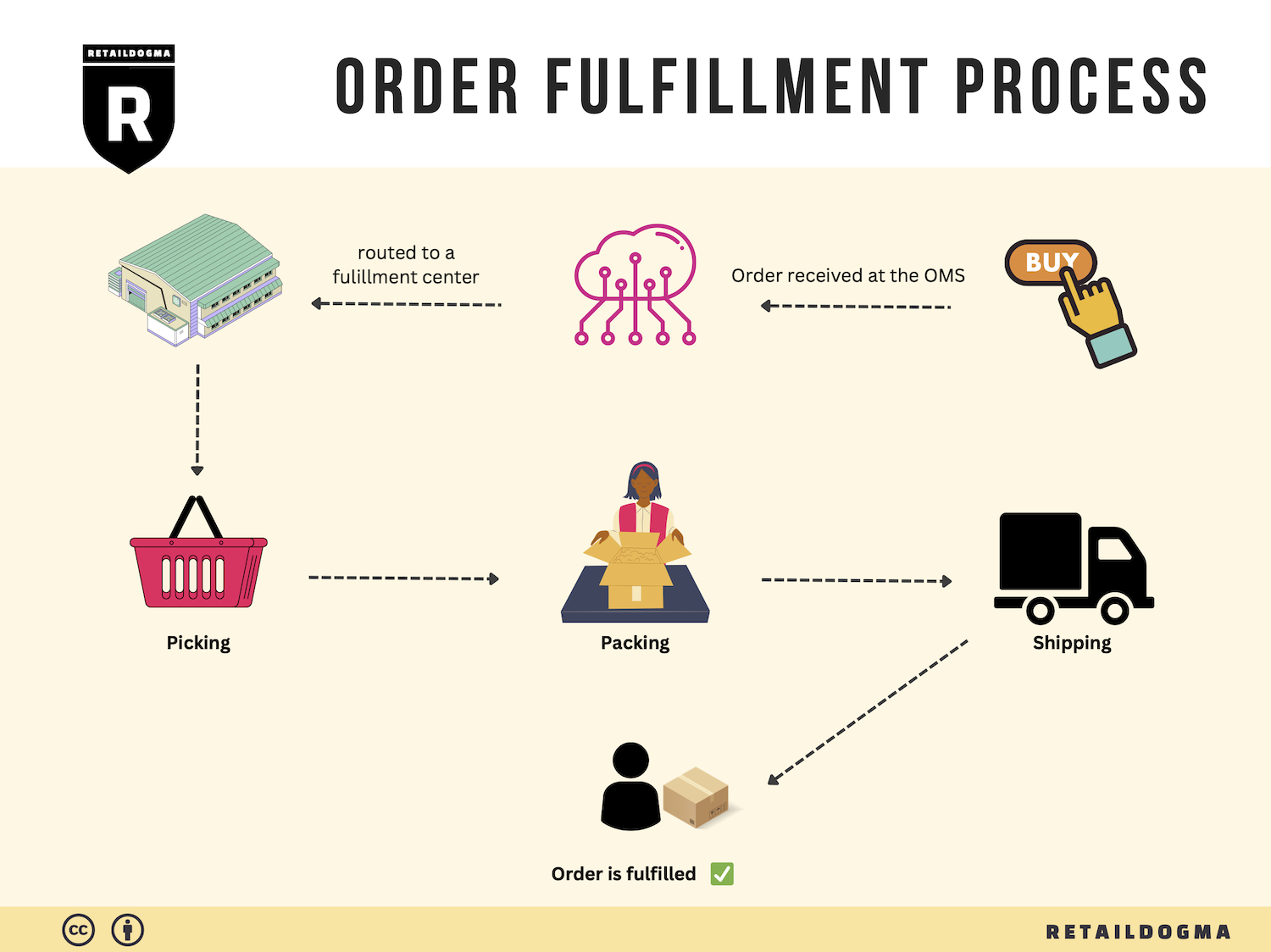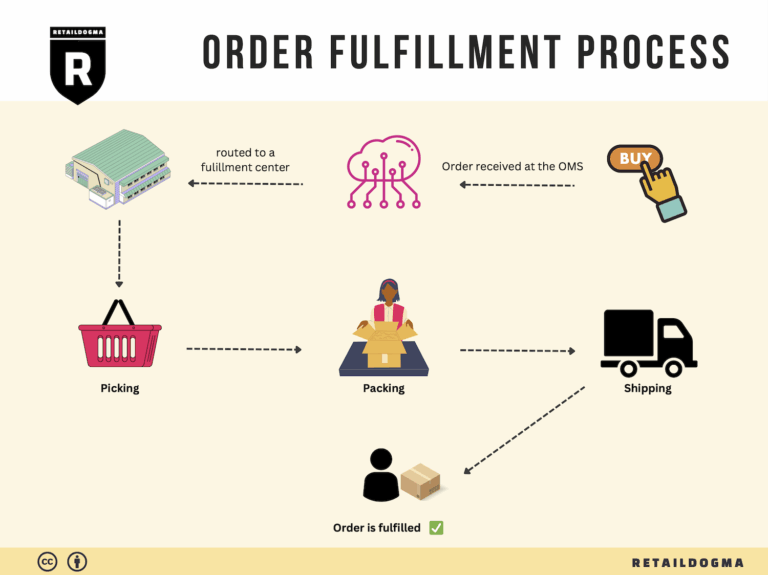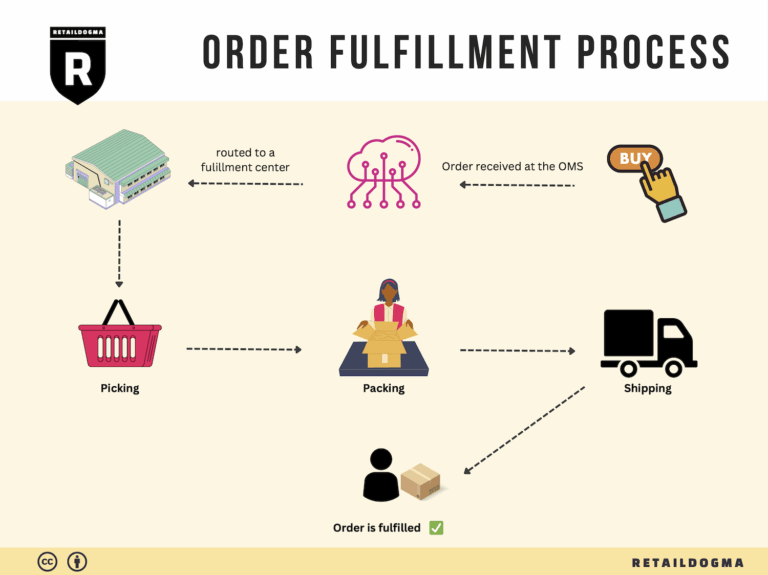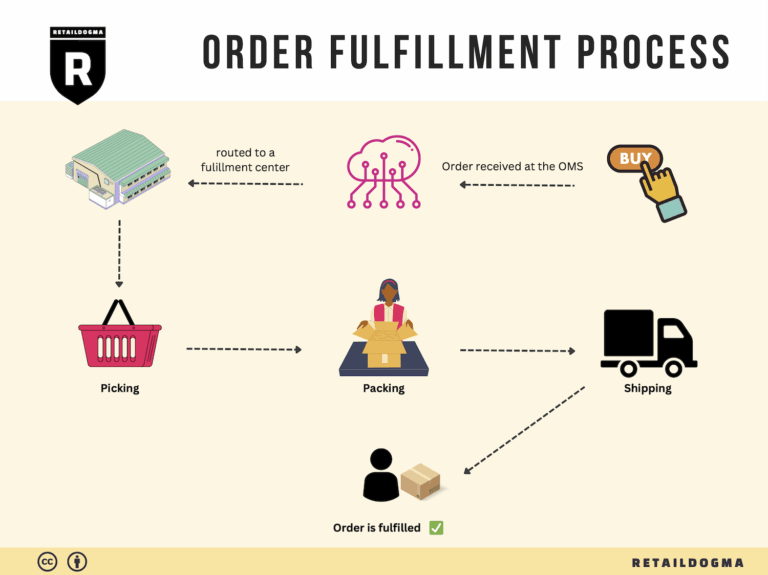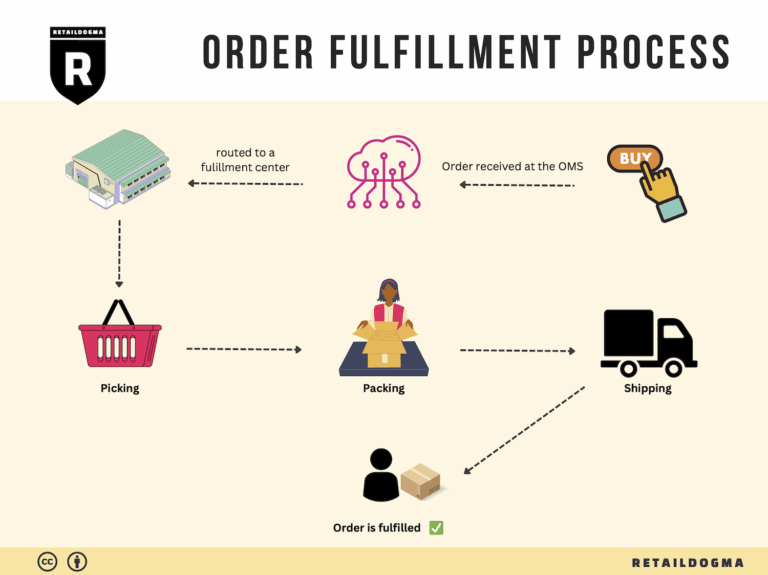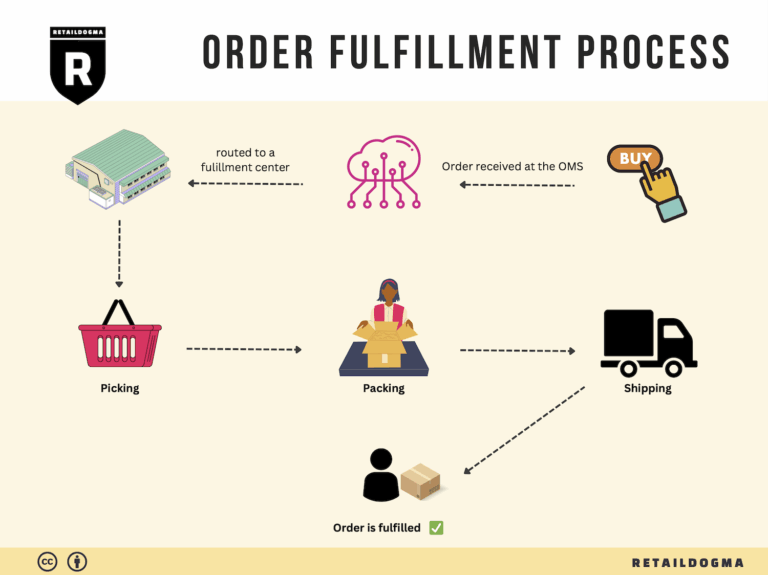How Order Fulfillment Works: A Step-by-Step Guide for Businesses
What is E-commerce Fulfillment? An Introduction for Growing Businesses
Understanding E-commerce Fulfillment
As your online business grows, the excitement of increased sales can quickly turn into the stress of managing packing and shipping orders. Many e-commerce entrepreneurs find themselves overwhelmed by the logistics of getting products into the hands of customers. The reality is that fulfillment—simply defined as the process of delivering a product to a customer—can be a complex and time-consuming task.
For growing businesses, effective fulfillment is critical to maintaining customer satisfaction and scaling operations. In this guide, we will explore the various fulfillment models available to e-commerce businesses, including Third-Party Logistics (3PL) and Fulfillment by Amazon (FBA). Each model has its own strengths and weaknesses, and understanding these can help you choose the right solution for your business needs.
Core Services of Fulfillment
Fulfillment encompasses several core services essential for successful e-commerce operations. These include inventory management, order processing, picking and packing, shipping, and returns management. Each service plays a vital role in the overall customer experience. For instance, efficient inventory management ensures that you have the right products available when customers want them, while timely shipping keeps your delivery promises.
Choosing the Right Fulfillment Partner
Selecting the right fulfillment partner is a crucial decision for any growing business. Factors to consider include the partner’s location, technology capabilities, scalability options, and customer service track record. A well-chosen partner can not only help streamline your logistics but also provide valuable insights into improving your operations and customer satisfaction.
Understanding Pricing Models
Pricing for fulfillment services can vary widely based on the chosen model and the specific services required. This guide will break down common pricing structures, helping you understand how to budget for fulfillment and make informed financial decisions.
Empowering Your Logistics Decisions
Ultimately, this guide aims to empower e-commerce businesses to make smart, strategic decisions about their logistics. By understanding the fundamentals of fulfillment, exploring different service models, and learning how to choose the right partners, you can streamline your operations and focus on what you do best: growing your business. Whether you’re considering a move to a fulfillment center like the LGA9 Amazon Fulfillment Center in Edison, NJ, or exploring other options, the insights provided here will help you navigate the complexities of e-commerce fulfillment with confidence.

What You’ll Learn In This Guide
- What is E-commerce Fulfillment? An Introduction for Growing Businesses
- The Order Fulfillment Process: From ‘Buy’ Button to Customer’s Door
- Comparing Fulfillment Models: In-House vs. 3PL vs. Dropshipping
- A Deep Dive into Amazon FBA: Pros, Cons, and Who It’s For
- Core Services Offered by Fulfillment Centers
- How to Choose a Fulfillment Partner: A 6-Point Checklist
- Understanding Fulfillment Pricing: A Breakdown of Common Fees
- Frequently Asked Questions (FAQs) about Fulfillment
- Conclusion: Is Outsourcing Fulfillment the Right Move for Your Business?
- Important Disclaimer
The Order Fulfillment Process: From ‘Buy’ Button to Customer’s Door
1. Receiving Inventory
The first step in the order fulfillment process is receiving inventory at the fulfillment center, such as the LGA9 Amazon Fulfillment Center located in Edison, NJ. When products arrive, they are checked against purchase orders to ensure accuracy. This process involves inspecting the items for damage and confirming quantities, which is crucial for maintaining inventory accuracy and minimizing discrepancies.
Importance: Efficient receiving processes help prevent stockouts and overstock situations, ensuring that products are available for customer orders. A well-managed receiving process allows businesses to quickly update their inventory systems and maintain accurate records.
Key Term: SKU (Stock Keeping Unit) – This unique identifier is essential for tracking inventory and simplifying the receiving process. Each product’s SKU helps streamline inventory management, making it easier to locate and manage items in the warehouse.
2. Warehouse Storage
After inventory is received, the next step is warehouse storage. This involves strategically placing products within the fulfillment center for optimal accessibility. Items are typically stored based on their size, weight, and demand frequency, ensuring that high-demand items are easily accessible to minimize picking time.
Importance: Proper warehouse organization significantly impacts overall efficiency in the fulfillment process. Effective storage solutions can reduce the time it takes to pick and pack orders, ultimately leading to faster delivery times and improved customer satisfaction.
Key Term: ABC Analysis – This inventory categorization technique helps businesses prioritize stock based on its importance. “A” items are high-value or high-demand products, while “C” items are lower in value or demand. This analysis aids in optimizing storage space and resource allocation.
3. Order Picking
Once a customer places an order, the next step is order picking. This process involves retrieving the products from their storage locations based on a pick list, which outlines the items needed for the order. Fulfillment centers often utilize various picking methods, including single order picking, batch picking, and zone picking, depending on the volume of orders and the layout of the warehouse.

Importance: Efficient order picking is critical for minimizing errors and ensuring timely fulfillment. The faster and more accurately items are picked, the quicker they can be packed and shipped, directly affecting customer satisfaction and repeat business.
Key Term: Pick List – This document outlines the specific items and quantities needed for each order. It is a vital tool in the picking process, helping staff efficiently locate and gather products.
4. Order Packing
After the items are picked, they move to the packing stage. In this step, products are carefully packed into boxes or envelopes, ensuring they are secure for shipping. This includes adding protective materials, labeling packages correctly, and including any necessary documentation (like invoices or return labels).
Importance: Proper packing is essential for preventing damage during transit and ensuring a positive unboxing experience for customers. Well-packed orders reduce the likelihood of returns due to damage, ultimately saving costs and enhancing customer loyalty.
Key Term: Packaging Materials – These materials, which can include boxes, bubble wrap, and packing peanuts, are crucial for safeguarding products. Choosing the right packaging not only protects items but can also reflect your brand’s commitment to quality.
5. Shipping & Delivery
The final step in the order fulfillment process is shipping and delivery. Once packages are packed, they are labeled and handed over to shipping carriers, which could include UPS, FedEx, or Amazon’s own delivery network. Tracking numbers are generated and sent to customers, allowing them to monitor their shipments in real-time.
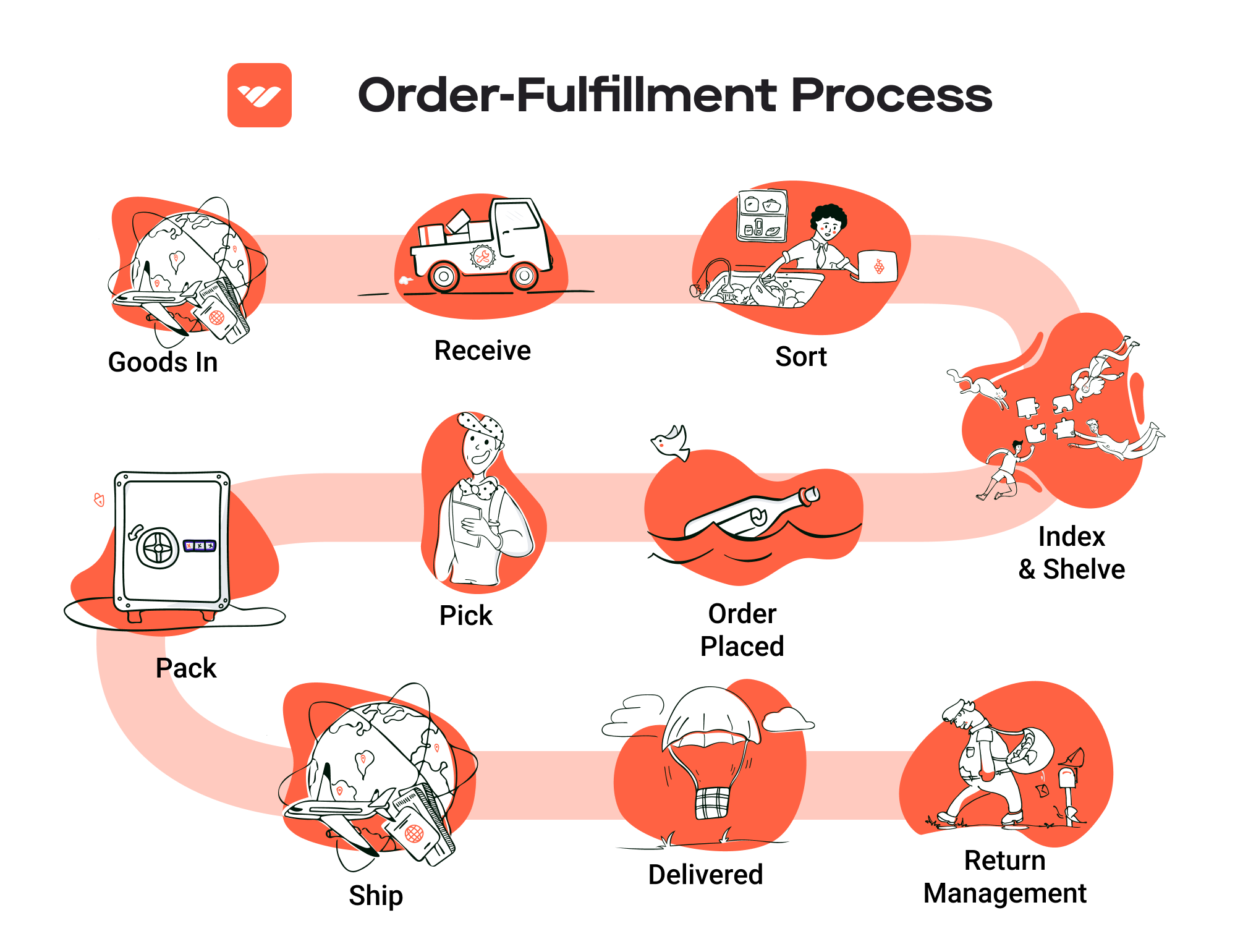
Importance: Timely shipping is a key driver of customer satisfaction and retention. Efficient shipping processes can help businesses compete in the fast-paced e-commerce environment, where consumers expect quick and reliable delivery.
Key Term: Last Mile Delivery – This term refers to the final step of the shipping process, where packages are delivered from a distribution center to the customer’s doorstep. Optimizing last-mile delivery is crucial for reducing shipping costs and improving delivery times, ultimately enhancing the overall customer experience.
By following these five steps in the order fulfillment process, e-commerce businesses can ensure a smooth transition from the moment a customer clicks the ‘buy’ button to the moment their package arrives at their door. Each step plays a vital role in enhancing operational efficiency, customer satisfaction, and business scalability.
Comparing Fulfillment Models: In-House vs. 3PL vs. Dropshipping
Fulfillment Models Comparison
| Model | Who Handles Inventory | Best For (Business Stage) | Key Advantage | Key Disadvantage |
|---|---|---|---|---|
| In-House Fulfillment | The business itself | Startups to Established | Complete control over inventory and process | High overhead costs and resource-intensive |
| Third-Party Logistics (3PL) | A third-party logistics provider | Growing to Large Scale | Scalability and expertise in logistics | Less control over inventory and potential service variability |
| Dropshipping | Suppliers or manufacturers | Startups and Small Businesses | Low initial investment and no inventory risk | Lower margins and potential quality control issues |
In-House Fulfillment
In-house fulfillment involves managing all aspects of the warehousing, packaging, and shipping process internally. This model is often adopted by startups and established businesses that prioritize control over their inventory and fulfillment operations. By maintaining direct oversight of logistics, businesses can ensure quality control, tailor the customer experience, and streamline processes according to their specific needs. However, in-house fulfillment can be resource-intensive, requiring significant investment in warehousing space, staffing, and technology. As order volumes increase, the complexities of managing logistics can also lead to higher operational costs. This model is best suited for businesses that have sufficient capital and resources to invest in their fulfillment infrastructure and are looking to create a unique customer experience.
Third-Party Logistics (3PL)
Third-party logistics (3PL) providers offer outsourced logistics services that handle various aspects of the supply chain, including warehousing, order fulfillment, and shipping. This model is particularly beneficial for growing businesses that may not have the infrastructure or expertise to manage fulfillment effectively. By partnering with a 3PL, companies can leverage the provider’s established systems, technology, and expertise, enabling them to scale their operations quickly without the burden of managing logistics in-house. 3PLs can also offer flexibility in terms of warehousing space and shipping options, which can be crucial for seasonal fluctuations in demand. However, businesses using a 3PL may face challenges regarding control over inventory management and the potential variability in service quality, which can affect customer satisfaction.
Dropshipping
Dropshipping is a fulfillment model where businesses sell products without holding any inventory. Instead, when a customer places an order, the retailer forwards the order details to a supplier who then ships the product directly to the customer. This model is particularly appealing for startups and small businesses due to its low initial investment and minimal financial risk. Entrepreneurs can test new products and markets without the burden of inventory management or warehousing costs. However, dropshipping can lead to lower profit margins since suppliers often charge a premium for handling shipping. Additionally, businesses may encounter issues with product quality and shipping delays, as they have less control over the fulfillment process. For those entering the e-commerce space with limited resources, dropshipping can be a viable option, but it’s essential to choose reliable suppliers to mitigate potential risks.
Conclusion
Choosing the right fulfillment model is crucial for the scalability and success of an e-commerce business. Each model—In-House Fulfillment, Third-Party Logistics (3PL), and Dropshipping—offers distinct advantages and disadvantages depending on the business’s stage, resources, and growth strategy. By understanding these differences, entrepreneurs and operations managers can make informed decisions that align with their operational capabilities and customer expectations.
A Deep Dive into Amazon FBA: Pros, Cons, and Who It’s For
Understanding Fulfillment by Amazon (FBA)
Fulfillment by Amazon (FBA) is a service that allows e-commerce sellers to store their products in Amazon’s fulfillment centers. Amazon takes care of storage, packaging, and shipping, allowing sellers to focus on other aspects of their business. When a customer orders a product, Amazon picks, packs, and ships it on behalf of the seller. This service not only simplifies logistics for sellers but also integrates them into Amazon’s vast marketplace, making their products available to millions of potential customers.
How FBA Works
The process begins when sellers sign up for FBA and create listings for their products. They then ship their inventory to Amazon’s fulfillment centers, such as the LGA9 facility in Edison, NJ. Once the products arrive, Amazon handles everything from storage to shipping and customer service. Sellers can track inventory levels, sales, and performance metrics through their Amazon Seller Central account.
When a product is ordered, Amazon automatically processes the order and ships it directly to the customer. Sellers benefit from Amazon’s shipping rates and can offer Prime eligibility, which significantly enhances their visibility and appeal in the marketplace. Additionally, Amazon provides customer support for FBA orders, handling returns and inquiries, which further streamlines the selling process.
Pros of Using FBA
-
Prime Eligibility: One of the most significant advantages of FBA is that products become eligible for Amazon Prime. This means they can be offered with free two-day shipping, attracting a larger customer base. Prime members tend to spend more, making this feature crucial for sales growth.
-
Increased Customer Trust: Products fulfilled by Amazon carry the Amazon brand, which is synonymous with reliability and trustworthiness. This association can lead to higher conversion rates as customers feel more secure purchasing items backed by Amazon’s fulfillment services.
-
Multi-Channel Fulfillment: FBA allows sellers to fulfill orders from various platforms, not just Amazon. This means that a seller can list products on their own website or other marketplaces while still leveraging Amazon’s logistics capabilities for shipping, thus simplifying inventory management across channels.
-
Scalability: As your business grows, FBA can easily scale with you. You can send larger quantities of inventory to Amazon, allowing you to handle increased sales without the need for additional warehousing or logistics management.
-
Reduced Operational Burden: FBA handles many of the time-consuming aspects of e-commerce, such as storage, packing, and shipping, enabling sellers to focus on marketing, product development, and other core business activities.
Cons of Using FBA
-
High Fees: FBA comes with various fees, including storage fees for keeping inventory in Amazon’s warehouses and fulfillment fees for each order processed. These costs can add up quickly, particularly for slow-moving items, potentially impacting profit margins.
-
Strict Inventory Rules: Amazon has stringent inventory management guidelines. Sellers must ensure that their inventory levels are well-managed to avoid long-term storage fees and potential penalties for excessive inventory. This can be a burden for small businesses that lack sophisticated inventory management systems.
-
Commingling Risks: FBA allows for commingling inventory, meaning that sellers’ products may be mixed with those of other sellers. While this can streamline operations, it also poses risks, such as the potential for counterfeit products or quality control issues, which can harm a seller’s reputation.
-
Limited Control Over Customer Experience: When using FBA, sellers relinquish some control over the customer experience. Amazon manages packaging and shipping, which means sellers cannot customize packaging or directly interact with customers regarding shipping issues.
-
Dependency on Amazon: Relying heavily on FBA can make sellers vulnerable to changes in Amazon’s policies or fee structures. If Amazon decides to increase fees or change fulfillment rules, it can significantly affect a seller’s business model.
Who is FBA Best For?
Fulfillment by Amazon is particularly beneficial for:
-
Small to Medium-Sized Businesses: Those looking to scale quickly without investing heavily in logistics infrastructure can leverage FBA to access Amazon’s vast customer base and logistical capabilities.
-
E-commerce Entrepreneurs: New sellers who want to enter the market with minimal upfront logistics costs may find FBA an attractive option to simplify their operations.
-
Sellers with High Sales Volume: Businesses that anticipate a high volume of sales can take advantage of FBA’s efficient fulfillment processes and reduced shipping costs.
-
Brands Seeking Trust and Visibility: Companies wanting to enhance their brand visibility and credibility in the market can benefit from FBA’s association with the Amazon brand and its Prime membership.
-
Multi-Channel Sellers: Those selling on multiple platforms will find FBA’s multi-channel fulfillment capabilities advantageous, allowing them to manage orders seamlessly across different sales channels.
In conclusion, while Fulfillment by Amazon offers numerous advantages, including increased visibility and reduced operational burdens, it is essential for businesses to carefully consider the associated costs and potential drawbacks. By evaluating their specific needs and operational capabilities, e-commerce sellers can make informed decisions about whether FBA is the right fulfillment solution for their growth strategy.
Core Services Offered by Fulfillment Centers
Inventory Management & Warehousing
Inventory management and warehousing are foundational services provided by fulfillment centers, crucial for e-commerce businesses aiming to scale efficiently. This service involves the systematic tracking, storing, and organizing of products in a dedicated warehouse space. Fulfillment centers like Amazon’s LGA9 facility employ advanced inventory management systems that utilize real-time data to monitor stock levels, product movement, and storage optimization.
Benefits:
1. Accuracy and Efficiency: Automated systems reduce human error, ensuring that inventory counts are accurate. This minimizes stockouts and overstock situations, which can lead to lost sales or unnecessary holding costs.
2. Scalability: As your business grows, so does your inventory. Fulfillment centers provide the infrastructure to accommodate increasing product volumes without the need for significant capital investment in additional warehousing.
3. Cost-Effectiveness: By outsourcing warehousing, businesses can save on overhead costs associated with maintaining their own storage facilities, including rent, utilities, and labor.
Pick and Pack Services
Pick and pack services refer to the process of selecting items from the warehouse (picking) and packaging them for shipment (packing). Fulfillment centers utilize organized systems and trained staff to ensure that orders are fulfilled accurately and efficiently. This service is especially vital for e-commerce businesses with high order volumes and diverse product offerings.
Benefits:
1. Speed: Fulfillment centers can process orders quickly, often shipping items the same day they are ordered, which enhances customer satisfaction through timely deliveries.
2. Accuracy: Professional pick and pack operations use barcoding and scanning technologies to ensure the correct items are picked for each order, reducing returns due to errors.
3. Flexibility: Businesses can easily adjust their order fulfillment strategies based on seasonal demand or promotional campaigns without investing in additional labor or resources.
Kitting and Assembly
Kitting and assembly services involve the grouping of individual items into ready-to-ship sets or kits, which can include assembling products that require some level of configuration before shipping. This is particularly useful for businesses that offer products requiring assembly or that sell bundled items.
Benefits:
1. Enhanced Value Proposition: By offering kits or assembled products, e-commerce businesses can create unique offerings that differentiate them in the marketplace, often leading to higher sales and customer satisfaction.
2. Streamlined Operations: Outsourcing kitting and assembly to a fulfillment center allows businesses to focus on core competencies like marketing and sales, rather than logistical challenges.
3. Inventory Management: Kitting can help manage inventory more effectively by consolidating multiple SKUs into a single product offering, simplifying stock management and reducing complexity.
Returns Management (Reverse Logistics)
Returns management, or reverse logistics, is the process of handling returned items efficiently. This service is essential for e-commerce businesses, as online shopping typically sees higher return rates compared to traditional retail. Fulfillment centers like LGA9 provide streamlined processes for receiving, inspecting, and processing returns.
Benefits:
1. Improved Customer Experience: A seamless returns process enhances customer satisfaction, as buyers appreciate easy return policies. This can lead to repeat business and positive reviews.
2. Cost Efficiency: Efficient returns management minimizes losses associated with returned merchandise. Fulfillment centers can quickly restock items that are in good condition, reducing the need to write off inventory.
3. Data Insights: By analyzing return data, businesses can identify trends and issues related to product quality or customer preferences, informing future product development and marketing strategies.
Conclusion
Utilizing the core services of fulfillment centers, such as inventory management, pick and pack services, kitting and assembly, and returns management, can significantly enhance the operational efficiency of e-commerce businesses. By outsourcing these logistics functions, entrepreneurs and operations managers can focus on scaling their sales and optimizing their overall business strategy, ultimately leading to greater customer satisfaction and improved profitability.
How to Choose a Fulfillment Partner: A 6-Point Checklist
Location & Warehouse Network
Choosing a fulfillment partner starts with understanding their location and warehouse network. The proximity of fulfillment centers to your customer base can significantly impact shipping times and costs.
Why It’s Important:
– Shipping Efficiency: The closer the warehouse is to your target market, the faster and cheaper the shipping will be.
– Market Coverage: A robust network ensures that you can reach a wider audience without incurring exorbitant shipping fees.
Questions to Ask:
– What locations do you have for your warehouses, and how do they align with my customer demographics?
– Can you provide insights into your shipping zones and delivery times from each warehouse?
– How do you handle shipping logistics during peak seasons or promotions?
Technology & Integrations
In today’s digital landscape, technology plays a crucial role in fulfillment operations. A fulfillment partner should offer advanced technology solutions that integrate seamlessly with your e-commerce platform.
Why It’s Important:
– Real-Time Tracking: Technology allows you to track inventory levels and order status, which enhances customer satisfaction.
– Automation: Automated systems can reduce errors and improve order processing speed.
Questions to Ask:
– What technology platforms do you use for inventory management and order processing?
– How do you integrate with major e-commerce platforms (like Shopify, Amazon, WooCommerce)?
– Can you provide API access for custom integrations?
Specializations (e.g., Cold Storage, Oversized Items)
Different businesses have unique product needs. If you offer specialized products, such as perishable goods or oversized items, ensure your fulfillment partner can accommodate these requirements.
Why It’s Important:
– Product Integrity: Specialized storage conditions (like cold storage) are essential for preserving product quality.
– Handling Requirements: Oversized or fragile items may require special handling and packaging solutions.
Questions to Ask:
– What specializations do you offer in terms of storage and handling?
– How do you ensure the integrity of temperature-sensitive products during storage and shipping?
– What packaging solutions do you provide for oversized or fragile items?
Scalability & Capacity
As your business grows, your fulfillment needs will change. It’s vital to choose a partner that can scale operations to meet your evolving requirements.
Why It’s Important:
– Growth Support: A scalable partner can accommodate increased order volumes without compromising service quality.
– Flexibility: The ability to adapt to seasonal fluctuations or sudden demand spikes is crucial for maintaining customer satisfaction.
Questions to Ask:
– What is your current capacity, and how do you handle fluctuations in order volume?
– Can you accommodate sudden increases in order volume during peak seasons?
– What is your plan for infrastructure expansion if my business grows?
Pricing and Contracts
Understanding the cost structure and contractual obligations is essential when selecting a fulfillment partner. Transparent pricing models can help you budget effectively and avoid hidden fees.
Why It’s Important:
– Cost Control: Knowing all potential costs helps prevent budget overruns.
– Contract Flexibility: A fair contract allows you to exit or renegotiate terms as your business needs change.
Questions to Ask:
– Can you provide a detailed breakdown of your pricing structure?
– Are there any hidden fees for services like storage, handling, or returns?
– What are the terms regarding contract length, termination, and renegotiation?
Customer Support & Reviews
Finally, assess the level of customer support and read reviews from other clients. Excellent support can help resolve issues quickly and maintain smooth operations.
Why It’s Important:
– Reliability: A partner with strong customer support can help you address issues before they escalate.
– Reputation: Reviews and testimonials can provide insights into the partner’s reliability and service quality.
Questions to Ask:
– What kind of customer support do you offer (e.g., dedicated account manager, 24/7 support)?
– How do you handle disputes or issues that arise during fulfillment?
– Can you provide references or case studies from similar businesses in my industry?
Conclusion
Choosing the right fulfillment partner is a critical decision that can significantly influence your e-commerce operations. By using this checklist, you can ensure that your potential partner aligns with your business needs and growth objectives. Take the time to ask the right questions, gather information, and evaluate each partner’s capabilities before making your final decision. This diligence will position your business for success as you scale your sales and logistics operations.
Understanding Fulfillment Pricing: A Breakdown of Common Fees
Initial Setup Fees
Initial setup fees are typically charged when you first begin utilizing a fulfillment center’s services. These fees cover the costs associated with onboarding your business into the fulfillment system, including account setup, integration with your existing e-commerce platform, and any necessary training for your team. The exact amount can vary based on the complexity of your product catalog and the fulfillment provider’s requirements.
To calculate this fee, fulfillment centers may consider factors such as the number of SKUs (stock-keeping units) you have, the level of customization needed for your storage and fulfillment processes, and any specific technology integrations (e.g., API connections with your online store). It’s crucial to ask your fulfillment partner for a clear breakdown of these costs upfront to avoid surprises later.
Receiving Fees
Receiving fees are charged each time your inventory arrives at the fulfillment center. This fee covers the labor and resources required to unload, inspect, and store your products. The fee structure can be based on the number of pallets or boxes received, the total weight, or even the total number of SKUs in the shipment.
To estimate receiving fees, fulfillment centers often use a tiered pricing model. For example, the first 10 pallets may be charged at a higher rate, while additional pallets might incur a lower fee. Understanding how these fees are structured will help you plan your inventory shipments more effectively.
Storage Fees (per pallet/bin)
Storage fees are charged for the space your inventory occupies within the fulfillment center. These fees are typically calculated on a per-pallet or per-bin basis and can be charged monthly or quarterly. The cost may vary based on the size of the pallet or bin and the duration of storage.
For instance, some fulfillment centers offer a flat monthly rate per pallet, while others may charge based on the total volume of space your products occupy. Additionally, seasonal fluctuations in inventory can lead to varying storage fees; for example, during peak shopping seasons, you may find these fees are higher due to increased demand for storage space.
To manage storage fees effectively, consider implementing just-in-time inventory practices, which can help minimize the amount of inventory held at the fulfillment center.
Pick & Pack Fees (per item/order)
Pick and pack fees are charged for the actual fulfillment of orders, which includes locating the items in the warehouse, packing them for shipment, and preparing them for delivery. These fees can be calculated on a per-item or per-order basis.
The per-item fee is charged for each individual item picked from the shelves, while the per-order fee encompasses the entire order, regardless of the number of items. Some fulfillment centers may offer discounts on pick and pack fees for larger orders or for businesses that consistently ship high volumes.
Understanding this fee structure is crucial, as it directly impacts your overall fulfillment costs. Streamlining your inventory to reduce the number of unique items and optimizing your packaging can help lower these fees.
Shipping Fees
Shipping fees are the costs associated with transporting your products from the fulfillment center to your customers. These fees can vary significantly based on factors such as package size, weight, shipping method (standard, expedited, etc.), and destination.
Fulfillment centers typically calculate shipping fees by negotiating rates with carriers, which can lead to lower costs for businesses that ship large volumes. Additionally, some fulfillment providers offer flat-rate shipping options or discounted rates for specific carriers.
To estimate shipping costs accurately, it’s advisable to ask your fulfillment partner for a shipping rate chart based on different shipping scenarios. This transparency will help you incorporate shipping costs into your pricing strategy effectively.
Tips for Getting an Accurate Quote
-
Be Transparent About Your Needs: Provide your fulfillment partner with detailed information about your products, including dimensions, weight, and SKU counts. This will help them give you a more accurate quote.
-
Ask for a Comprehensive Breakdown: Ensure that the quote includes all potential fees—setup, receiving, storage, pick & pack, and shipping—to avoid any hidden costs.
-
Consider Seasonal Fluctuations: If your business experiences seasonal spikes, discuss how these fluctuations may impact your pricing and any additional fees that could apply.
-
Negotiate Terms: Don’t hesitate to negotiate pricing based on your expected volume and long-term partnership potential. Many fulfillment centers are open to adjusting fees for businesses that commit to higher volumes.
-
Review Contracts Thoroughly: Before signing any agreements, review the terms carefully to ensure you understand all potential fees and conditions. It may be beneficial to consult with a logistics expert to clarify any complex terms.
By understanding these common fulfillment pricing models and employing strategic planning, you can better manage your operational costs and streamline your e-commerce logistics.
Frequently Asked Questions (FAQs) about Fulfillment
1. What is the LGA9 Amazon Fulfillment Center?
The LGA9 Amazon Fulfillment Center, located at 2170 State Route 27, Edison, NJ, is a large-scale facility dedicated to the storage, packing, and shipping of a diverse range of products for Amazon. It plays a vital role in Amazon’s logistics network, ensuring efficient and timely order fulfillment for customers in the region.
2. How does the fulfillment process work at LGA9?
At LGA9, the fulfillment process typically involves receiving products from suppliers, storing them in organized inventory, picking and packing items as orders come in, and then shipping them to customers. This streamlined operation is designed to minimize delivery times and enhance customer satisfaction.
3. What types of products are handled at the LGA9 fulfillment center?
The LGA9 fulfillment center handles a wide variety of products, ranging from electronics and home goods to clothing and toys. This diversity allows Amazon to serve a broad customer base and meet varying consumer demands.
4. What is the difference between a warehouse and a fulfillment center?
A warehouse primarily focuses on storing goods for long-term inventory management, while a fulfillment center is specifically designed to process and ship orders quickly. Fulfillment centers often have advanced technology for order processing, inventory management, and shipping logistics, ensuring a faster turnaround for customer orders.
5. What is a 3PL (Third-Party Logistics)?
A 3PL, or Third-Party Logistics provider, is a company that offers outsourced logistics services, including warehousing, order fulfillment, and shipping. Many e-commerce businesses partner with 3PLs to leverage their expertise and infrastructure, allowing them to focus on core business activities while ensuring efficient logistics operations.
6. How much do fulfillment services cost?
Fulfillment service costs can vary widely based on several factors, including the type of products, order volume, and specific services required (e.g., storage, picking, packing, shipping). On average, businesses can expect to pay a combination of storage fees, per-order processing fees, and shipping costs. It’s crucial to obtain detailed quotes from fulfillment centers to understand the pricing structure.
7. What are the advantages of using the LGA9 fulfillment center?
Utilizing the LGA9 fulfillment center provides several advantages, including reduced shipping times due to its strategic location, access to Amazon’s advanced logistics technology, and the ability to scale operations as your business grows. Additionally, leveraging Amazon’s infrastructure can enhance customer satisfaction through reliable and timely delivery.
8. Can I track my inventory at LGA9?
Yes, businesses using the LGA9 fulfillment center can track their inventory through Amazon’s Fulfillment by Amazon (FBA) platform. This system provides real-time updates on inventory levels, order status, and shipment tracking, allowing businesses to manage their stock efficiently.
9. How can I optimize my fulfillment strategy with LGA9?
To optimize your fulfillment strategy with LGA9, consider implementing best practices such as maintaining accurate inventory levels, utilizing Amazon’s analytics tools to track sales trends, and streamlining product listings for better visibility. Additionally, regularly reviewing shipping options and costs can help enhance efficiency and profitability.
10. What support does Amazon provide for businesses using the LGA9 fulfillment center?
Amazon offers extensive support for businesses utilizing the LGA9 fulfillment center, including access to resources for setting up and managing your account, customer service assistance, and educational materials on best practices for optimizing fulfillment. Additionally, businesses can leverage Amazon’s marketing tools to enhance product visibility and sales.
Conclusion: Is Outsourcing Fulfillment the Right Move for Your Business?
The Case for Outsourcing Fulfillment
Outsourcing your fulfillment can be a strategic move for e-commerce businesses looking to streamline operations and scale effectively. One of the most significant advantages is the time saved; by partnering with a fulfillment service, you can focus on core business activities like marketing and product development, rather than being bogged down by logistics. This newfound time can be invaluable as you work on strategies to grow your brand and engage with customers.
Scalability is another key benefit. As demand fluctuates, especially during peak seasons or product launches, fulfillment partners can easily adjust to your needs. This flexibility allows you to expand your reach without the burden of managing increased inventory or shipping complexities. A reliable fulfillment service has the infrastructure and technology in place to handle varying order volumes, ensuring that your customers receive their products promptly.
Additionally, fulfillment partners bring expertise that can enhance your overall customer experience. They have established processes and systems to optimize shipping, reduce errors, and improve delivery times. This level of professionalism can lead to higher customer satisfaction and repeat business, which are critical for sustained growth.
However, the success of outsourcing fulfillment hinges on selecting the right partner. Not all fulfillment services are created equal; it’s essential to evaluate potential partners based on their capabilities, technology, and customer service.
To determine if outsourcing fulfillment is the right step for your business, consider conducting a thorough audit of your current shipping processes. Assess your operational challenges, customer feedback, and growth goals. This exercise will provide clarity on whether partnering with a fulfillment service aligns with your strategic objectives. Taking this proactive approach will position your business for success in an increasingly competitive e-commerce landscape.
Important Disclaimer
⚠️ Important Disclaimer
The information in this guide is for educational purposes. Fulfillment services, pricing, and platform features change frequently. Always conduct your own due diligence and consult with providers directly before making business decisions.
